By 1960, Jaguar had come a very long way from its roots as a manufacturer of Swallow Sidecars. Like so many other fledgling manufacturers, the company came about because of the drive of two young men who didn’t know enough not to embark on a new manufacturing venture. William Lyons was a dedicated motorcyclist from an early age, owning a variety of British and American machines. After a brief period at Crossley, he went into the motor trade as a salesman. However, he yearned to have his own business, which became possible when he partnered with William Wamsley, who was already making alloy-paneled motorcycle side cars in his Blackpoole garage on little more than a hobby basis. As side car sales increased, Swallow expanded into automotive bodies and finally, in 1931 the company introduced the spectacular SS1 car with a chassis and engine built to SS specifications by the Standard company. Just as the company’s sidecars and bodies had been incredibly stylish and very competitively priced, the new SS1 was low and long and positively gorgeous. It was also very modestly priced. However, the performance didn’t live up to the looks. By the late pre-war period, SS had finally combined its fine looks with serious performance in the 2.5 and 3.5 liter SS-100 sports cars and a series of SS Jaguar sedans. After the war, production resumed with modernized versions of the sedans, known as the 2.5 and 3.5 and later the Mark V. But the big news came with the introduction of the XK-120 in 1948. It was to be a limited-production sports car that would be a showcase for the firm’s new 3.4-liter double-overhead cam straight-six engine before it was fitted to a luxurious new sedan. The spectacular new roadster proved so popular that the alloy body was soon replaced with steel and the model spawned a coupe and drophead as well. The new Mk VII sedan was introduced in 1950 at the Earl’s Court show in London. Keeping with Jaguar’s condition, it was a fine-looking and luxurious car of very high quality for a very good price. Front suspension was independent, with leaf springs and a live axle in the rear. Brakes were hydraulic drums all around and the 160 horsepower six was mated to a four-speed manual transmission, although a Borg-Warner automatic became available in 1953. The same basic body evolved into the Mk VIIM (190hp) and Mk VIII (210hp). The final use of the bodyshell originally conceived for the MK VII was for the Mk IX, which came along in late 1958. Although the Mk IX used the same big sedan body that had been around since late 1950, it featured many detail changes and provision for two-tone paint. But the big changes came under the skin with a bigger and more powerful 3.8-liter version of the XK engine rated at 220 horsepower. Power steering was standard, as were four-wheel disc brakes. Despite the large size and weight of the Mk IX, it was capable of approximately 115 miles per hour. With minor changes, the car continued in production through late 1961. The example on offer dates from 1960 and is finished in black with a dark red leather interior and fine burled wood veneers. To many people, the Mk IX is the most desirable of Jaguar’s postwar sedans. It has the attractively rounded body, the biggest engine and the desirable disc brakes. And with only about 4,000 made for all left-hand drive markets, they rarely come to market.
By 1960, Jaguar had come a very long way from its roots as a manufacturer of Swallow Sidecars. Like so many other fledgling manufacturers, the company came about because of the drive of two young men who didn’t know enough not to embark on a new manufacturing venture. William Lyons was a dedicated motorcyclist from an early age, owning a variety of British and American machines. After a brief period at Crossley, he went into the motor trade as a salesman. However, he yearned to have his own business, which became possible when he partnered with William Wamsley, who was already making alloy-paneled motorcycle side cars in his Blackpoole garage on little more than a hobby basis. As side car sales increased, Swallow expanded into automotive bodies and finally, in 1931 the company introduced the spectacular SS1 car with a chassis and engine built to SS specifications by the Standard company. Just as the company’s sidecars and bodies had been incredibly stylish and very competitively priced, the new SS1 was low and long and positively gorgeous. It was also very modestly priced. However, the performance didn’t live up to the looks. By the late pre-war period, SS had finally combined its fine looks with serious performance in the 2.5 and 3.5 liter SS-100 sports cars and a series of SS Jaguar sedans. After the war, production resumed with modernized versions of the sedans, known as the 2.5 and 3.5 and later the Mark V. But the big news came with the introduction of the XK-120 in 1948. It was to be a limited-production sports car that would be a showcase for the firm’s new 3.4-liter double-overhead cam straight-six engine before it was fitted to a luxurious new sedan. The spectacular new roadster proved so popular that the alloy body was soon replaced with steel and the model spawned a coupe and drophead as well. The new Mk VII sedan was introduced in 1950 at the Earl’s Court show in London. Keeping with Jaguar’s condition, it was a fine-looking and luxurious car of very high quality for a very good price. Front suspension was independent, with leaf springs and a live axle in the rear. Brakes were hydraulic drums all around and the 160 horsepower six was mated to a four-speed manual transmission, although a Borg-Warner automatic became available in 1953. The same basic body evolved into the Mk VIIM (190hp) and Mk VIII (210hp). The final use of the bodyshell originally conceived for the MK VII was for the Mk IX, which came along in late 1958. Although the Mk IX used the same big sedan body that had been around since late 1950, it featured many detail changes and provision for two-tone paint. But the big changes came under the skin with a bigger and more powerful 3.8-liter version of the XK engine rated at 220 horsepower. Power steering was standard, as were four-wheel disc brakes. Despite the large size and weight of the Mk IX, it was capable of approximately 115 miles per hour. With minor changes, the car continued in production through late 1961. The example on offer dates from 1960 and is finished in black with a dark red leather interior and fine burled wood veneers. To many people, the Mk IX is the most desirable of Jaguar’s postwar sedans. It has the attractively rounded body, the biggest engine and the desirable disc brakes. And with only about 4,000 made for all left-hand drive markets, they rarely come to market.
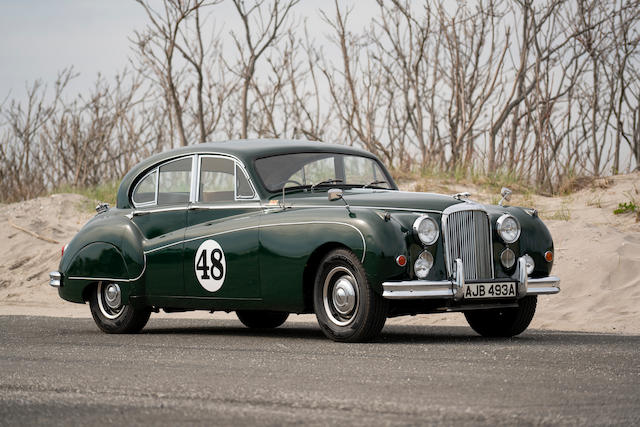

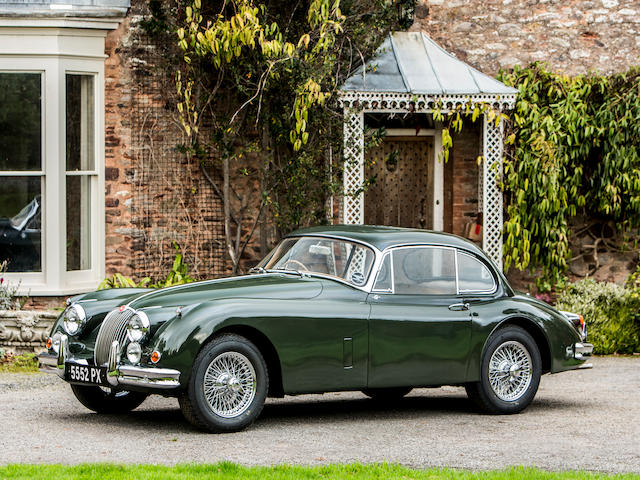
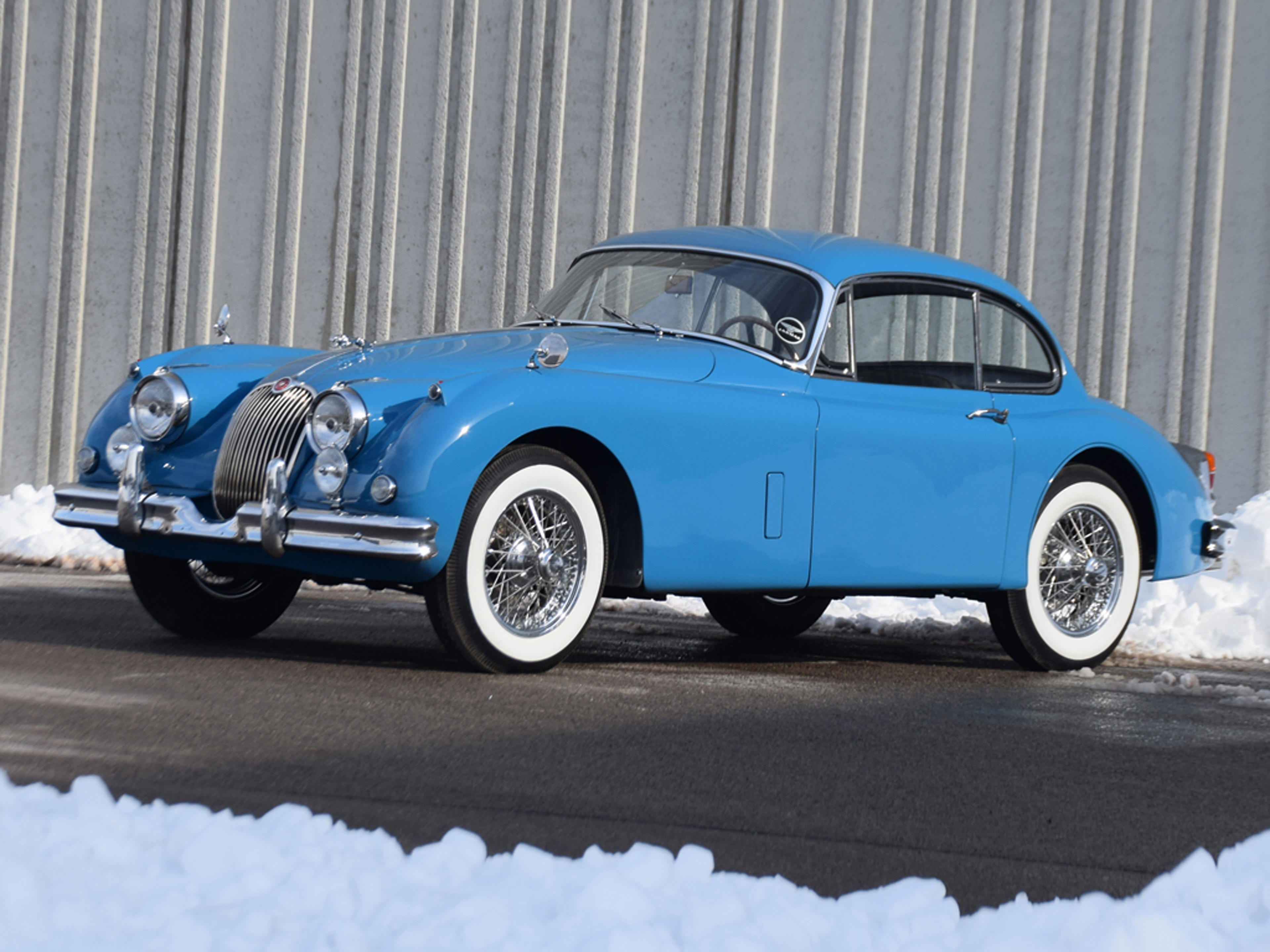



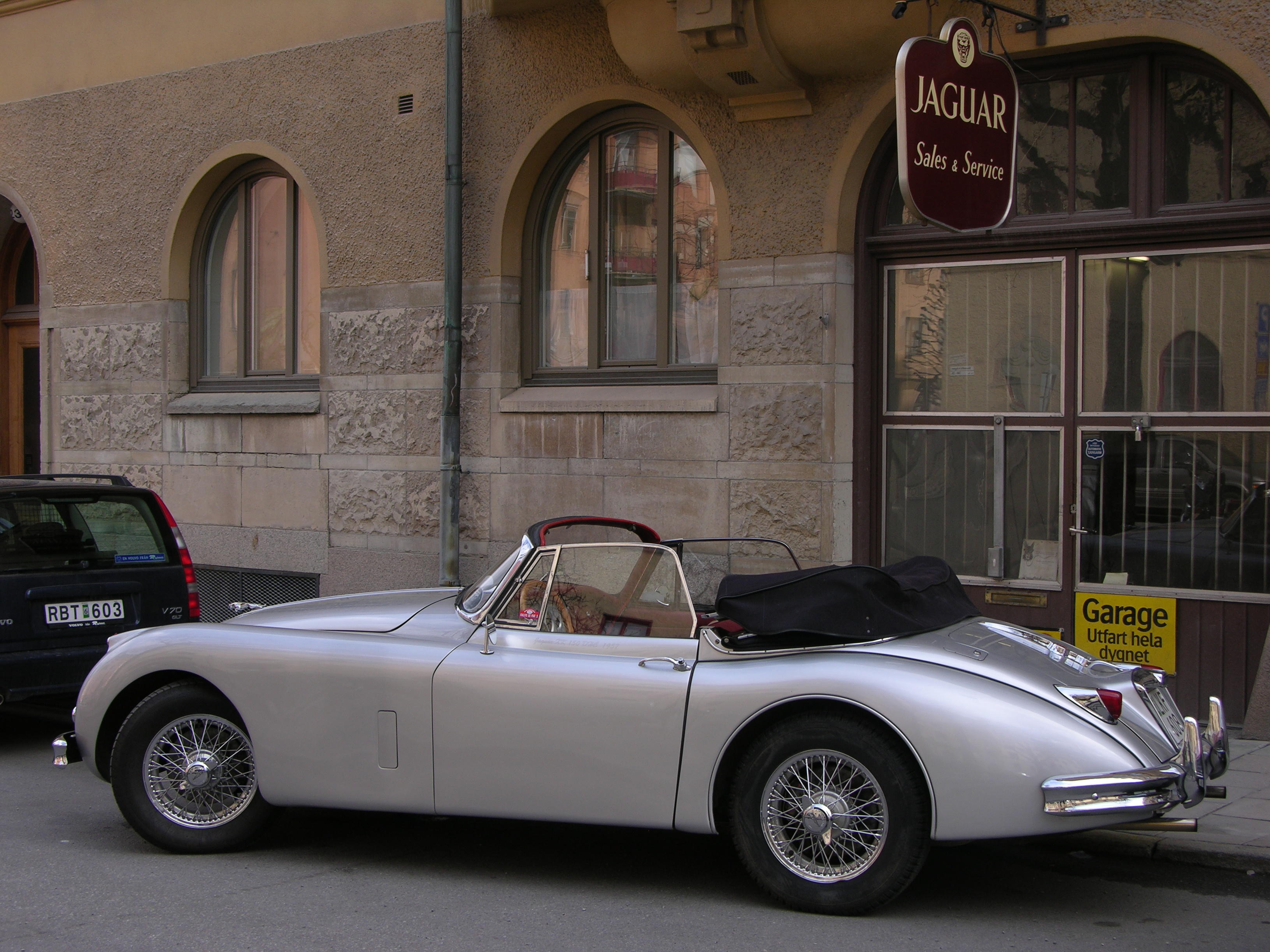
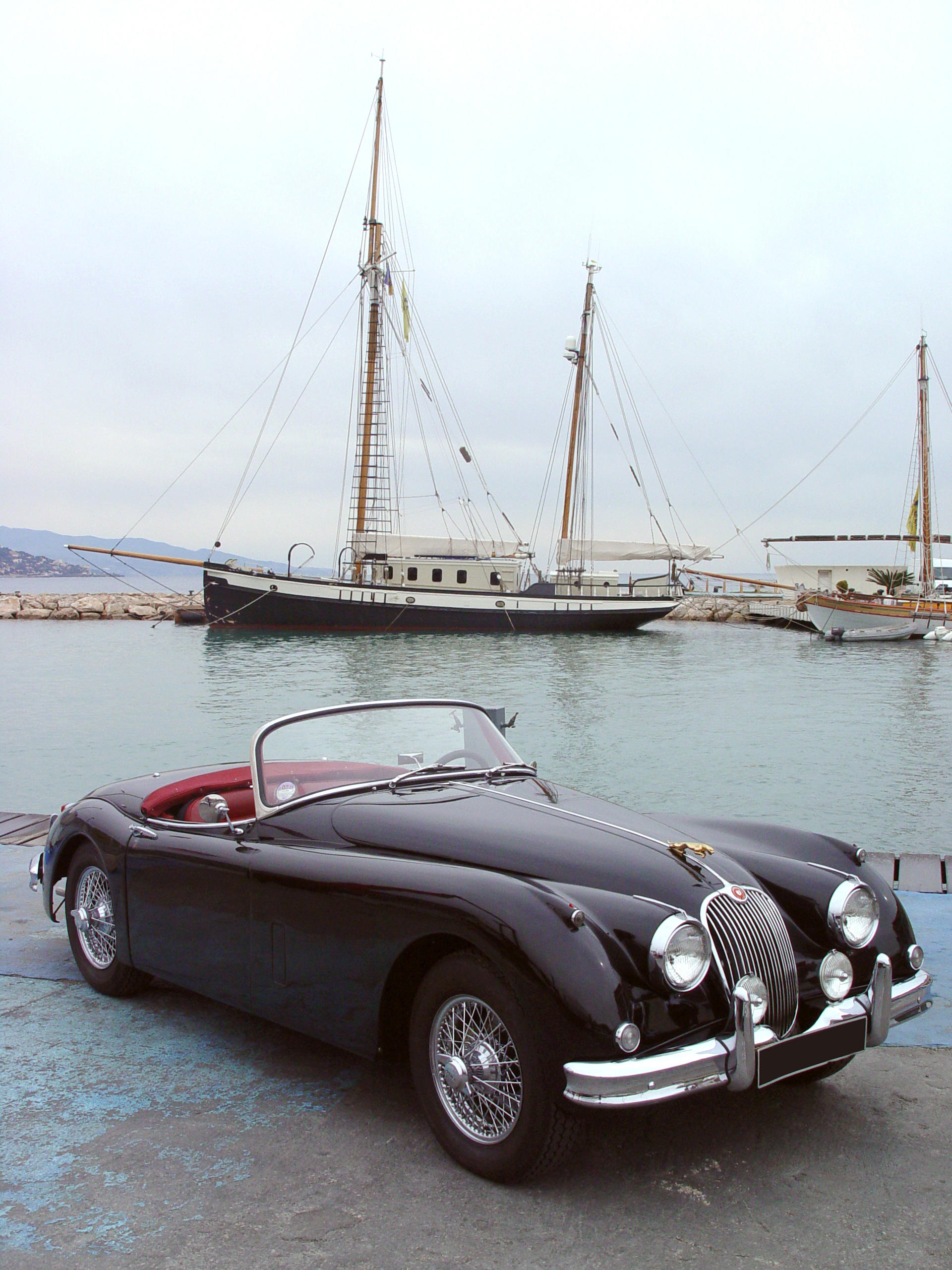
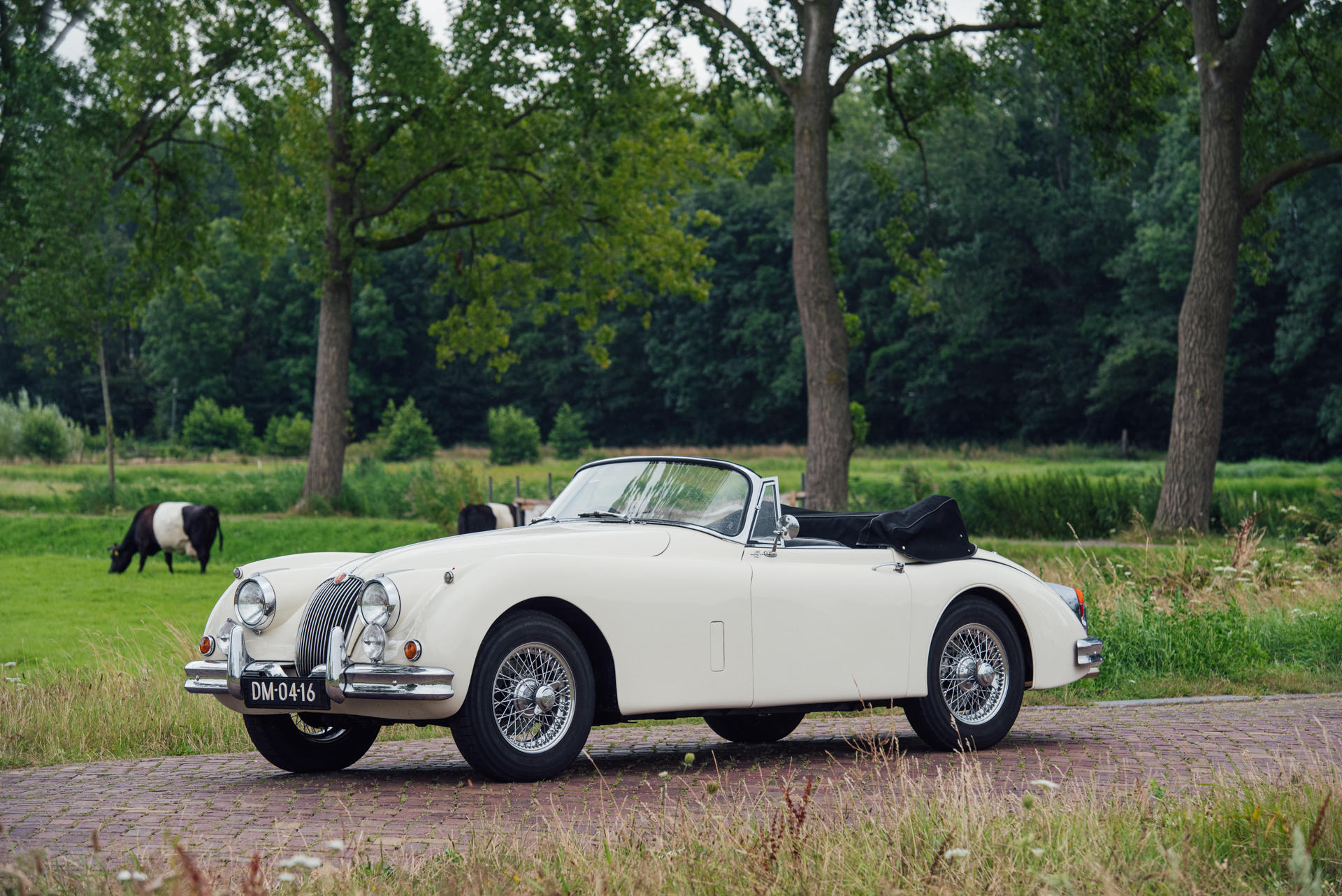
Testen Sie LotSearch und seine Premium-Features 7 Tage - ohne Kosten!
Lassen Sie sich automatisch über neue Objekte in kommenden Auktionen benachrichtigen.
Suchauftrag anlegen